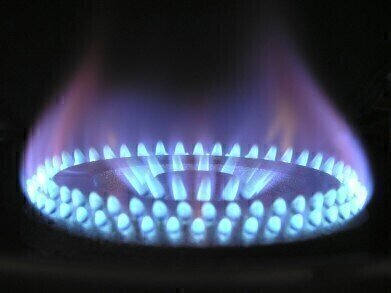Fuel for Thought
How Is Natural Gas Converted into Energy?
Nov 07 2014
Just like oil and coal, natural gas is a fossil fuel. But unlike its counterparts, it is plentiful. Natural gas is even considered to be relatively ‘clean’, emitting less carbon dioxide and fewer pollutants than some alternatives. But where does it come from? And how is natural gas converted into energy?
Where does natural gas come from?
Natural gas originates from the remains of plants and animals. This matter contains carbon - obtained from energy absorbed via the sun during their lifetime. Over thousands of years, these remains become covered with silt - trapping decaying material beneath. Eventually, this produces natural gas which remains beneath the earth’s surface until it is released by man-made extraction methods. For an in-depth looks at the origins of natural gas, read: What is Natural Gas?
To access natural gas, we need to know where to find it. Scientists can predict the location of natural gas because it pools in ‘reservoirs’, trapped within the earth after rising through porous rock. Certain rock formations and landscapes are more likely to contain natural gas reservoirs - for example sloped land that has folded over on itself to create a visible dome shape. Gas is also associated with other fossil fuels, meaning reserves are likely to be found near oil fields or coal beds.
Fracking is a method of extraction used to release natural gas from shale formations. Shale is particularly difficult to permeate, which is why fracking fluid is injected to force the gas out. It’s a controversial practice, but one that has opened up further gas reserves - especially in the United States where fracking has boomed over recent years. For more information on this contentious topics, read: The Pros & Cons of Fracking.
How is natural gas used for energy?
Natural gas is used to create electricity in one of two ways. After it has been extracted from the earth, it is transported via pipelines to a specialist facility. Hydrocarbon condensate can form in what is intended to be a dry gas stream, which is why accurate measurement of water vapour content can help identify the potential for pipeline corrosion damage, as discussed further in: The Physics of Natural Gas Sampling.
At the specialist facility, impurities such as helium and carbon dioxide are removed before taking it to a power plant where it drives a steam turbine or a combustion turbine. Both methods generate electricity - although the latter is more efficient.
Natural gas is not only used to generate electricity. It is often used as a domestic cooking and heating tool, via gas-fired hobs and central heating systems. It can be used in homes which lack access to mains electricity and can even power cars and airplanes.
The environmental impact of natural gas
The use of natural gas as a form of energy does have an impact on the environment, but not to the extent of other fossil fuels such as coal and oil. The reason for this is that the emissions of carbon dioxide and nitrogen oxides are less during the combustion of natural gas. However, tight environmental controls are still required, especially to ensure that methane - a potent and harmful gas - is not released during combustion or transportation.
Digital Edition
PIN 25.3 June/July
June 2024
Analytical Instrumentation - Recent Advances In Various Bench Scale Accelerated Oxidative Testing Methods For Fuels - Petrochemical Industry: Anton Paar Solutions Streamline Processes, Reduce H...
View all digital editions
Events
Jul 30 2024 Jakarta, Indonesia
Jul 30 2024 Jakarta, Indonesia
China Energy Summit & Exhibition
Jul 31 2024 Beijing, China
Jul 31 2024 Chengdu, China
Aug 05 2024 Moon Township, PA, USA


















